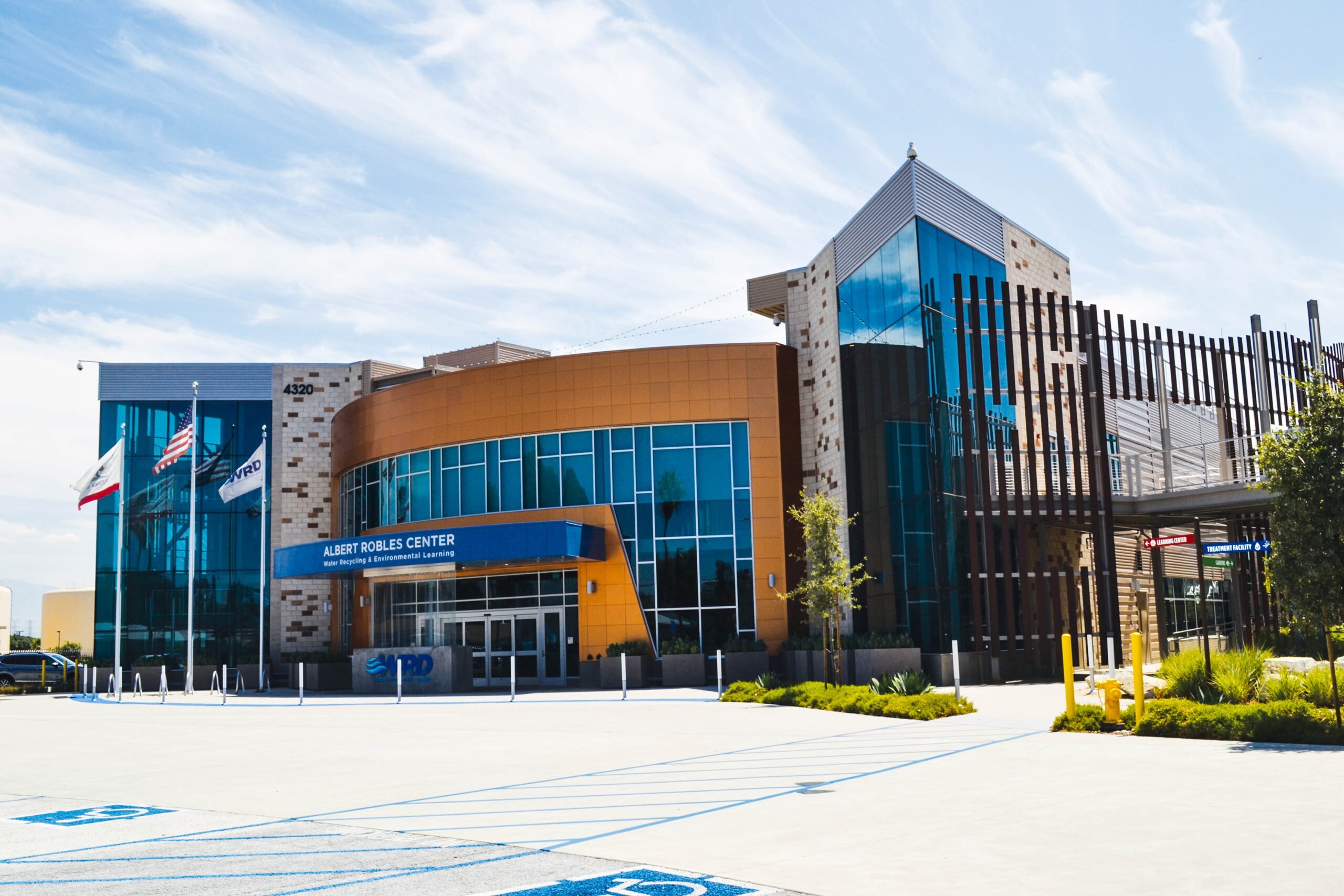
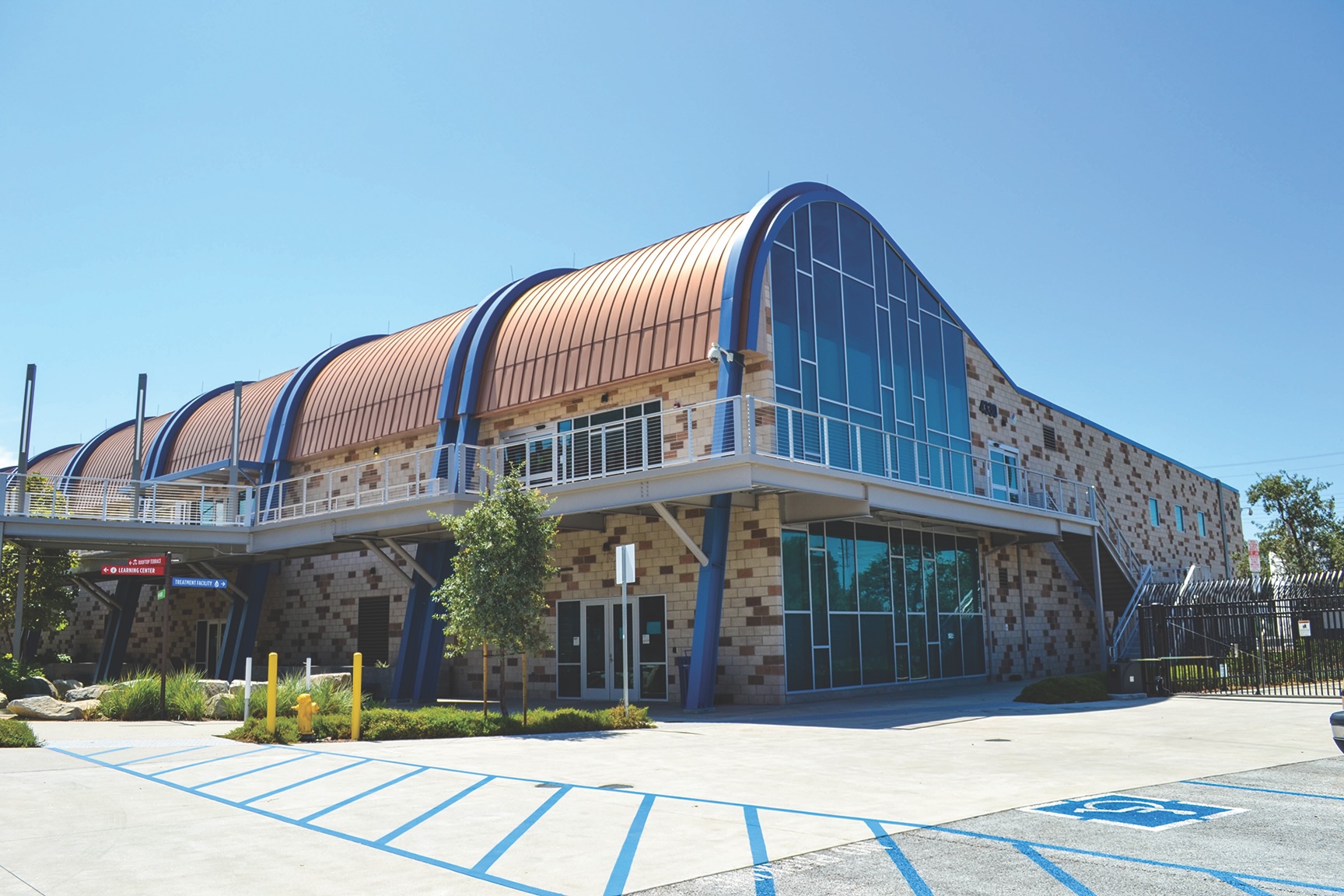
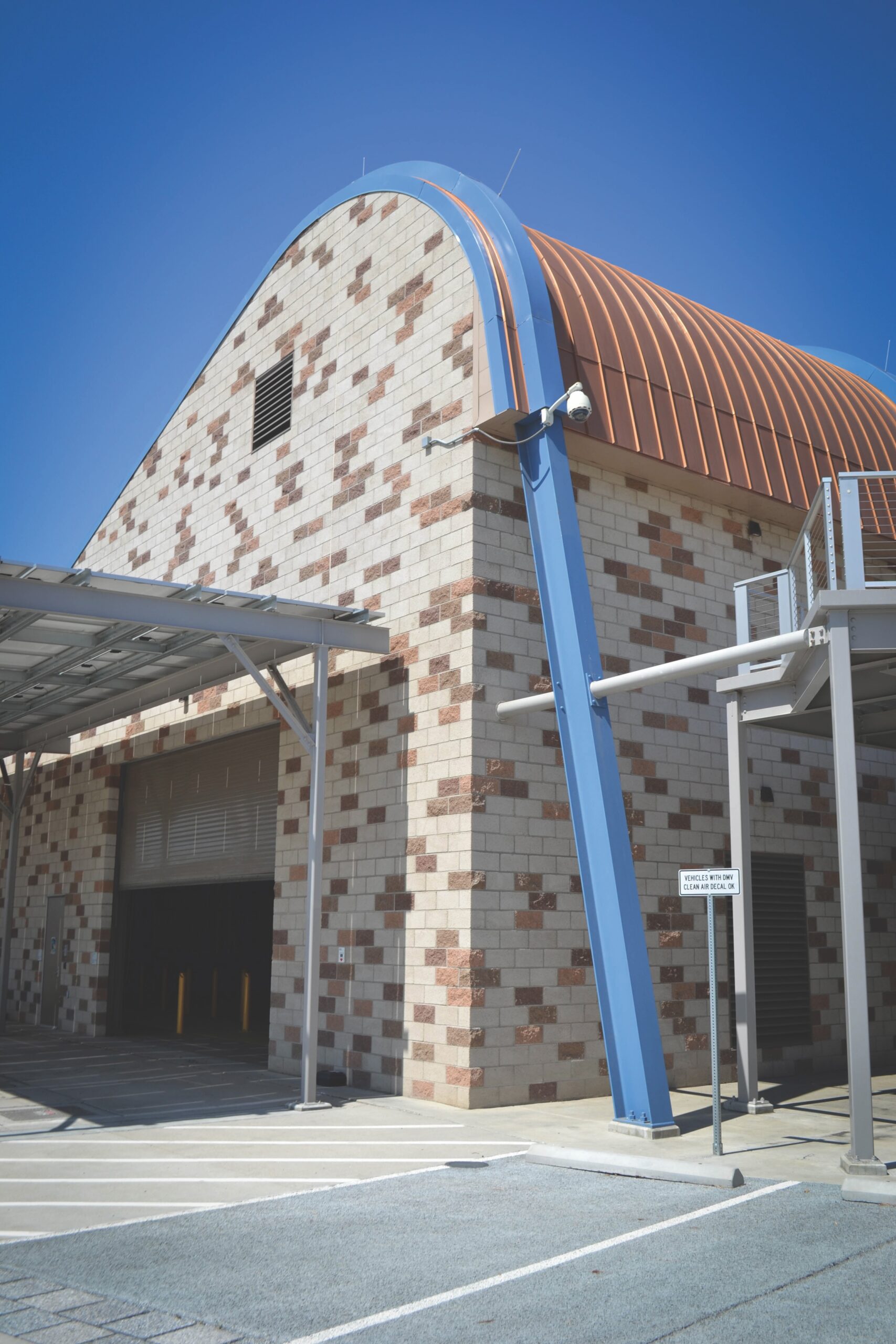
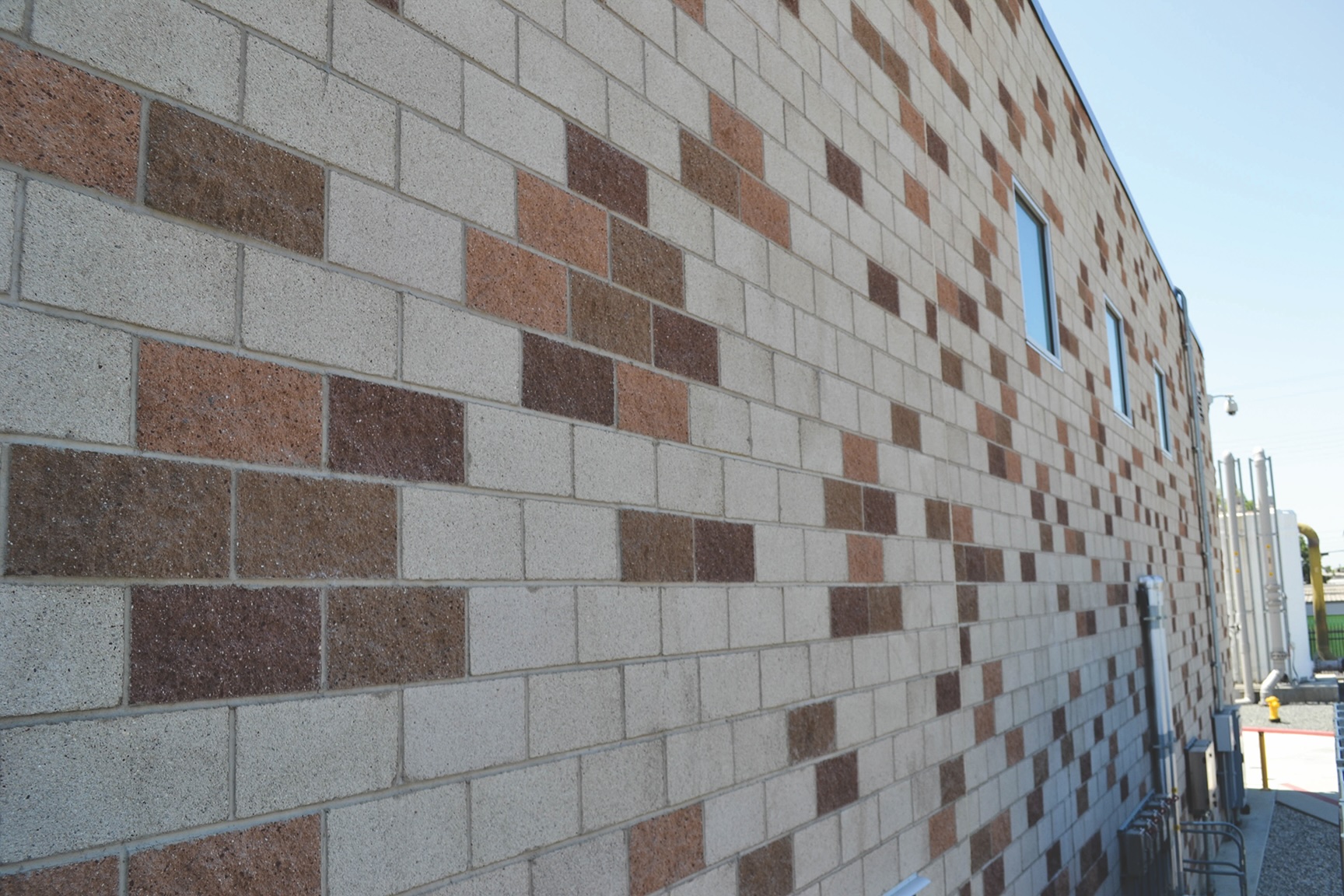
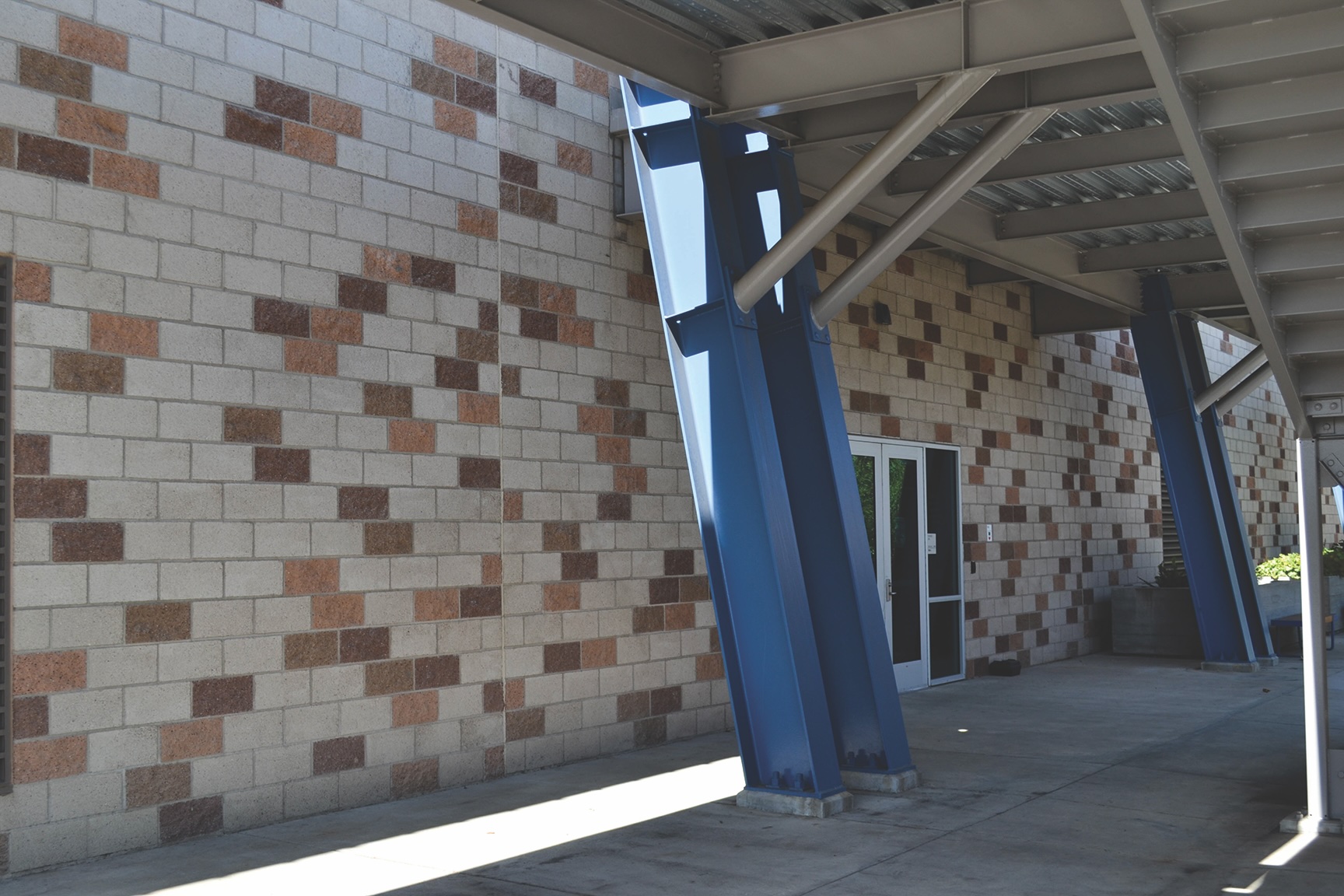
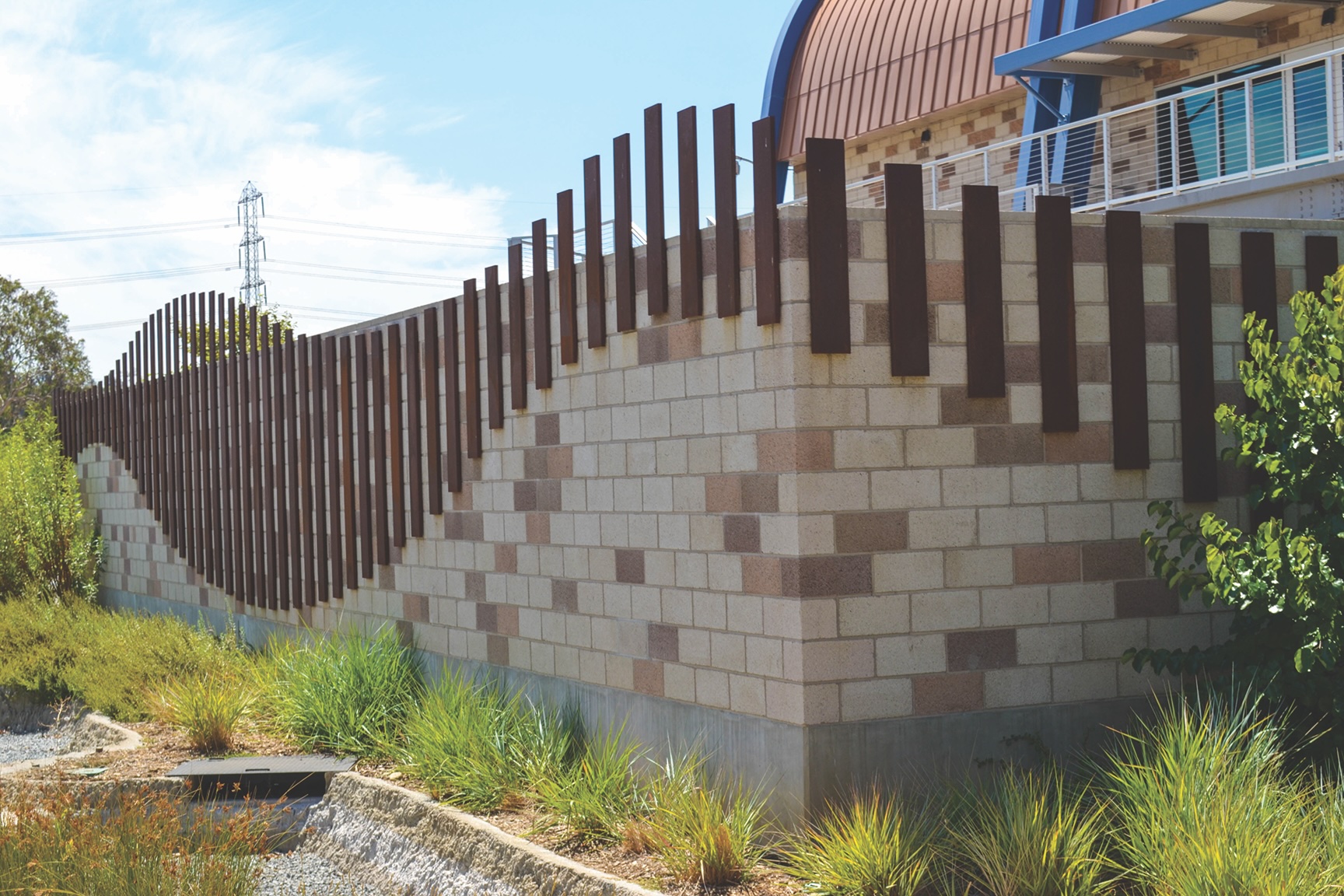
IT’S ALL IN THE DETAILS
The Albert Robles Center (ARC) for Water Recycling and Environmental Learning in Pico Rivera is a 5.2 acre advanced water treatment facility campus capable of treating up to 14 million gallons of water per day. ARC’s goal is to completely eliminate the need to import water to California’s Central Basin, which provides water to 10 percent of the state’s population.The facility also serves to educate the local community on water reuse and conservation, with the surrounding landscape playing a crucial role in this endeavor.
| Owner: Water Replenishment District (WRD), Lakewood, CA | Masonry contractor: Kretschmar & Smith, Inc., Riverside, CA |
| Architect: Gillis + Panichapan Architects, Inc., Costa Mesa, CA | Masonry producer/supplier: Angelus Block Company, Inc., Sun Valley, CA |
| General contractor: J.F. Shea Co., Inc., Walnut, CA | Masonry square footage: 32,000 sq. ft. |
| Structural engineering firm: Tetra Tech, Irvine, CA | Masonry cost: $1,200,000 Stories: 2 |
The ARC features CMU walls in a variety of earth tones, arranged in a pattern that reflects the natural surroundings. The use of large planes of patterned CMU walls anchors the ARC’s disparate architectural features including ramps, vertical metal fins, sun shades and standing seam panels. Two different block textures, shot blast and split face, were used in a running bond pattern — three tones of split face block were arranged in a randomized pattern onto the dominant gray shot blast background — creating additional texture and interest.
Throughout the development process, the buildings’ overall architectural design evolved across multiple stages — incorporating feedback from community outreach efforts with neighboring areas — to house an advanced water treatment facility, a digital learning center and a water-efficient demonstration garden. Moreover, the masonry construction meets high standards of sustainability, contributing to the building’s distinctive design and its LEED® rating.
In 2020, the ARC was awarded LEED® Platinum Certification, the highest rating offered to environmentally sustainable buildings — only 5.7% of LEED projects in the United States have achieved this distinguished designation. The landscape architecture also features various stormwater management techniques, such as permeable paving, bioretention basins, and a 10,000-square-foot living green roof, to facilitate water capture and infiltration.
The masonry work at the Albert Robles Center not only exemplifies architectural resilience and aesthetic harmony with its environment but also stands as a testament to sustainable building practices, playing a pivotal role in earning the esteemed LEED® Platinum Certification for this state-of-the-art facility.